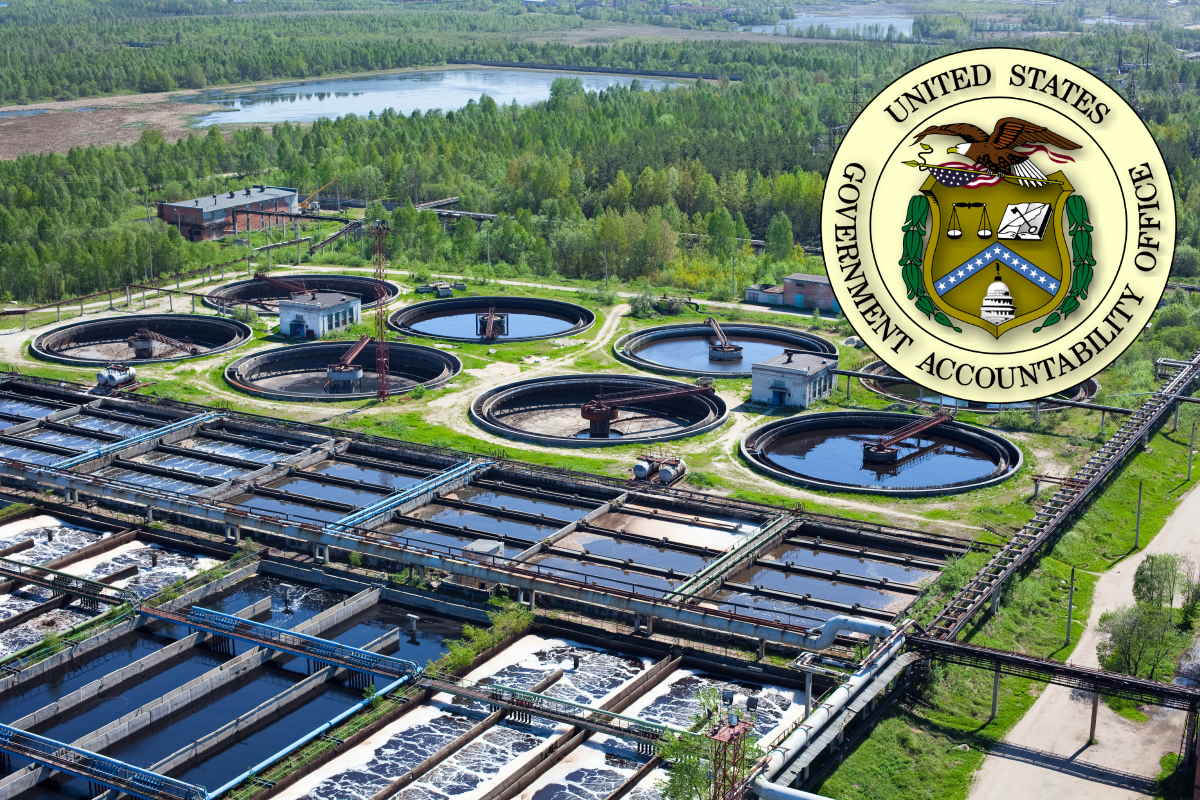House Committee chairs request GAO to review federal government’s water and wastewater sector efforts

The chairs of the U.S. Committee on Homeland Security and the Committee on Oversight and Reform have written to the Comptroller General requesting for the Government Accountability Office (GAO) to conduct a study that evaluates efforts by the Environmental Protection Agency (EPA) and the Federal Emergency Management Agency (FEMA). The move will look to identify and assist water and wastewater utilities that are vulnerable to shutdown from natural and other disasters, such as terrorist attacks and chemical and industrial accidents.
In a letter, signed by U.S. Rep. Bennie Thompson, Homeland Security Committee chairman and a Democrat from Mississippi, and Rep. Carolyn B. Maloney, Oversight and Reform Committee chairwoman and a Democrat from New York, the chairs requested information on how EPA and Department of Homeland Security (DHS) are identifying and prioritizing water and wastewater utilities to ensure that they are meeting their goals of providing clean and safe water and resilient communities. They also look into how the agencies are identifying and prioritizing utilities to receive assistance from their funding programs, and how the agencies are incorporating equity into these programs.
The chairs added that it is important that the EPA and DHS make progress on their water sector efforts so that all people, regardless of race, color, national origin, or income, enjoy the same degree of protection from environmental and health hazards. “We are interested in understanding how EPA and DHS are identifying and prioritizing water and wastewater utilities to ensure that they are meeting their goals of providing clean and safe water and resilient communities,” they added.
The request is part of the Committees’ ongoing investigation into the Jackson, Mississippi water crisis, which was declared a federal emergency by President Joe Biden this summer after torrential rain left residents without reliable access to safe drinking water for weeks. The chairs said that they would like to know how EPA and DHS are identifying and prioritizing utilities to receive assistance from their funding programs.
The letter also sought detail on the extent to which EPA, FEMA, and Cybersecurity and Infrastructure Security Agency (CISA) work together to identify and prioritize funding for water and wastewater utilities that are vulnerable to service disruptions, and how are EPA and FEMA implementing Executive Order 14008 Justice40 provisions and draft guidance as it relates to water and wastewater funding they provide.
The letter also looks into how are the EPA and FEMA incorporating racial equity into relevant programs, pursuant to Executive Order 13985, and how may this affect the water and wastewater funding they provide. It also seeks clarifications on how EPA, FEMA, and CISA provide information to the state, local, tribal, and territorial governments about federal funds and tools to distribute funds.
The letter said that the DHS, through the CISA, is responsible for leading federal efforts to secure critical infrastructure across all sectors, including water and wastewater, in coordination with Sector Risk Management Agencies (SRMAs). As part of its cross-sector coordination role, CISA provides free tools, resources, and assistance to critical infrastructure owners and operators to help them secure their physical and digital infrastructure.
Earlier this year, EPA, as the SRMA for the water and wastewater systems sector, extended the Industrial Control Systems (ICS) Cybersecurity Initiative to the water sector earlier this year. The water and wastewater sector action plan outlines surge actions that will take place over the next 100 days to improve the cybersecurity of the sector. The action plan was developed in close partnership with the EPA, CISA, and the Water Sector Coordinating Council (WSCC). Furthermore, EPA works in partnership with states to help ensure drinking water is safe and to protect the quality of the nation’s rivers, streams, lakes, and other water bodies.
Additionally, the EPA provides funding to help water and wastewater utilities build and maintain their infrastructure. The Infrastructure Investment and Jobs Act (IIJA), enacted in 2021, provided US$23 billion over six years for the two primary EPA programs to improve drinking water and wastewater infrastructure—the clean water and drinking water state revolving (SRF) programs.
Earlier this month, the National Cybersecurity Center of Excellence (NCCoE) published a draft project description seeking feedback from all stakeholders in the water and wastewater utilities sector. The NCCoE project is working to ensure that its guidance can benefit the broadest audience and is especially interested in hearing from water utilities of all sizes. The public comment period is open until Dec. 19, 2022.
These developments come as the U.S. administration is working towards securing cyberspace and strengthening American critical infrastructure. Anne Neuberger, deputy assistant to the president and deputy national security advisor for cyber and emerging threats, confirmed last month that the communications, water, and healthcare sectors are looking at new cybersecurity standards.
Addressing concerns in the water sector, Neuberger said that “a creative approach the EPA will be using‑‑a thank‑you and a shout‑out to Michael Regan and Janet McCabe at EPA‑‑who are taking the approach to say an existing legislation that calls for the safety and security of water that includes cybersecurity as well.”
Her announcement coincided with the EPA presenting a document covering a cybersecurity support plan for public water systems (PWSs) to Congress. The plan looks into the methodology to identify specific PWSs for which cybersecurity support should be prioritized, in addition to prescribing timelines for making voluntary technical support for cybersecurity available to specific PWSs.










